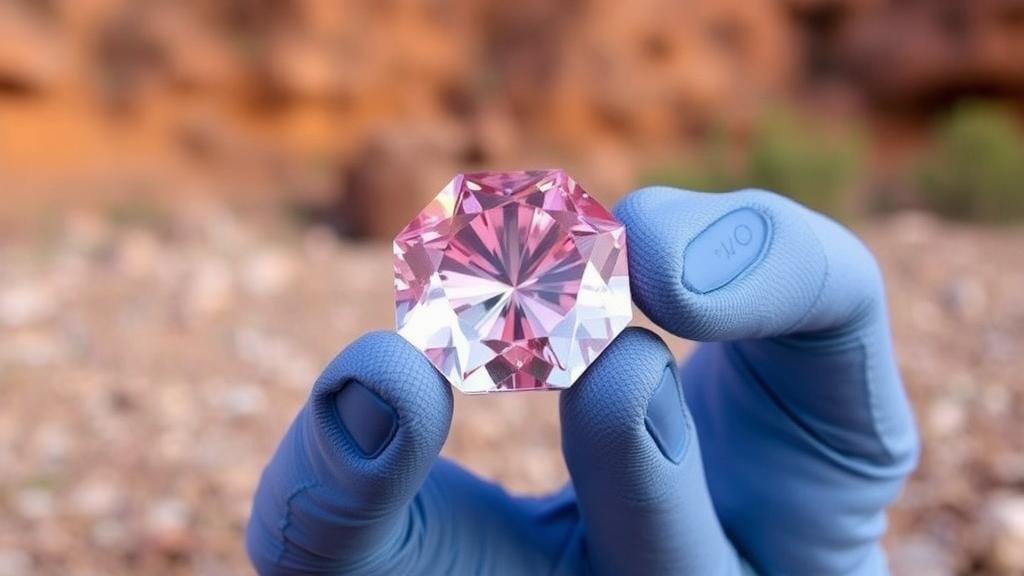Searching for rare pink diamonds in the remote Argyle Mine region of Western Australia.
Searching for Rare Pink Diamonds in the Remote Argyle Mine Region of Western Australia
For rockhounds and mineral collectors, the pursuit of rare pink diamonds presents a thrilling and challenging endeavor. The Argyle Mine, located in the remote East Kimberley region of Western Australia, was historically the worlds leading source of pink diamonds. Although the mines closure in 2020 raised questions about future availability, it remains a focal point for those interested in these precious stones.
The Allure of Pink Diamonds
Pink diamonds are not merely prized for their beauty; they are also exceptionally rare. Statistics indicate that pink diamonds constitute only 0.01% of all diamonds mined globally. Their unique coloration results from a combination of structural changes during the diamond formation process, which occur under extreme conditions several hundred kilometers beneath the Earths surface.
The Argyle Mine was operational from 1983 to 2020 and produced over 865 million carats of diamonds during its lifetime. The diamond-bearing pipes are classified as lamproite, a rare volcanic rock that provides the ideal geological conditions for diamond formation. Scientists estimate that the region has hosted at least 28 diamond pipes, with the Argyle pipe being the richest.
Understanding the Pink Diamond Color Spectrum
Pink diamonds showcase a spectrum of colors, from light pink to vivid purples. The categorization of these diamonds is typically based on color intensity:
- Pale Pink: Very light shades, often perceived as whitish.
- Fancy Pink: A moderate pink color, easily recognized.
- Intense Pink: Darker shades that capture attention.
- Vivid Pink: The rarest and most valuable, exhibiting a strong saturation of color.
Practical Tips for Rockhounds and Collectors
If you’re considering exploring the Argyle Mine region, bear in mind the following practical tips:
- Research Regulations: The Argyle Mine is not open to the public, and searching for diamonds without permission is illegal. Consult local authorities or authorized tours for guidance.
- Join Local Clubs: Engage with regional gem and mineral clubs to gain insights and share experiences with fellow enthusiasts.
- Invest in Equipment: Basic tools for mineral exploration include sieves, shovels, and brushes. A good quality loupe can help you examine potential finds closely.
The Future of Pink Diamonds
With the Argyle Mine officially closed, the future of pink diamond mining remains uncertain. Other sources may be discovered, but as of now, the market for these stones remains incredibly competitive. According to the Fancy Color Research Foundation, the prices of pink diamonds have significantly increased over the past decade, with some auction records exceeding $1 million per carat.
Real-World Applications and Market Insights
The closure of the Argyle Mine has encouraged a focus on synthetic alternatives and ethical sourcing. Many collectors are now considering lab-grown diamonds, which offer a similar appearance and are often marketed at lower price points. Plus, awareness of ethical considerations in mining practices has led to a growing market for responsibly sourced gems.
Conclusion: The Quest Continues
The search for rare pink diamonds in the Argyle region symbolizes the tireless spirit of rockhounds and mineral collectors. While the Argyle Mine itself may no longer generate new finds, the legacy and geological significance continue to drive interest. Engaging in passionate discussions within collector circles, studying geology, and remaining abreast of market trends can enhance one’s experience in this captivating field.
Whether youre a seasoned collector or a curious newcomer, the journey through diamond exploration in Western Australia will provide lasting memories and insights.



